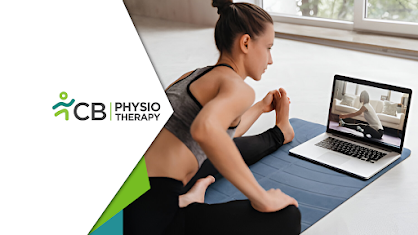In the wake of the COVID-19 pandemic, telehealth experienced an unprecedented rise, and physiotherapy was no exception. What began as a necessary adaptation quickly grew into a viable model of care, especially for patients who face barriers to accessing in-person services. But many patients and professionals still wonder: Is tele-physiotherapy effective? Can exercises, assessments, and treatment plans work over a screen?
The short answer is: Yes, when applied in the right context. Online physiotherapy sessions have shown great promise in specific scenarios. With the right tools and approach, digital care can deliver outcomes that rival — and sometimes surpass — in-person visits.
What Is Tele-Physiotherapy?
Tele-physiotherapy refers to delivering physiotherapy services remotely using video calls, mobile apps, and online platforms. This typically includes guided exercises, postural assessments, education on injury prevention, and ongoing progress tracking.
While it lacks the hands-on component of traditional physiotherapy, tele-physio compensates with better accessibility, flexibility, and personalized home-based care — especially when supported by technology such as the Activ PT app.
Activ PT: Enhancing the Tele-Physio Experience
One of the challenges with remote physiotherapy is ensuring that patients remain consistent, motivated, and informed between sessions. That’s where apps like Activ PT come in.
Activ PT is a physiotherapist-designed app that bridges the gap between virtual consultations and at-home rehab. It allows patients to:
2. Track their progress and symptoms to provide real-time feedback to their therapist.
3. Communicate securely with their physiotherapist for updates or questions between sessions.
Access educational content tailored to their condition or recovery stage.
By using Activ PT, patients don’t just attend a session and forget — they stay engaged, accountable, and on track toward their recovery goals. For therapists, it offers the ability to monitor adherence and adjust treatment plans based on real-world data.
Evidence Behind Tele-Physiotherapy
Multiple studies have demonstrated that for a wide range of conditions, tele-physiotherapy is just as effective as in-person care. A 2021 systematic review in Journal of Physiotherapy concluded that tele-rehabilitation could produce similar outcomes in pain reduction, mobility, and quality of life for musculoskeletal and post-surgical patients.
Another study in The Lancet found no significant difference in recovery outcomes for patients with knee osteoarthritis undergoing virtual vs. face-to-face rehabilitation over 12 weeks.
These results are particularly promising for chronic conditions, rehabilitation after orthopedic surgery, and education-based interventions, especially when apps like Activ PT support the journey.
When Online Physiotherapy Works Best
Not all physiotherapy needs to be hands-on. Many conditions and patient needs can be effectively managed virtually. Here’s when tele-physio really shines:
1. Chronic Musculoskeletal Pain
Conditions like low back pain, neck pain, and osteoarthritis respond well to education and home-based exercise. Activ PT enhances this by allowing patients to follow prescribed routines accurately and consistently.
2. Post-Surgical Rehabilitation
Rehab after surgeries like ACL reconstructions or total knee replacements often involves repetitive, structured exercises. These are ideal for guided home sessions supported by video instructions and tracking tools in apps like Activ PT.
3. Desk Ergonomics and Posture Correction
Tele-physio lets therapists assess your real workspace and make posture corrections in real time. With Activ PT, follow-up posture drills or mobility sequences can be reinforced daily with on-screen guidance.
4. Pelvic Floor Therapy and Pre/Postnatal Rehab
These sensitive therapies are often more convenient for patients in their own space. Educational materials and progressive exercise programs on Activ PT help make care consistent and accessible.
5. Rural and Remote Access
For patients in remote areas, telehealth is sometimes the only realistic option. With the added functionality of Activ PT, patients get structure, continuity, and access to a physiotherapist’s expertise — regardless of location.
Keys to Success in Tele-Physiotherapy
When done right, tele-physiotherapy can offer tremendous value. Here’s how to get the most out of your experience:
1. Use the Right Tech Tools
Choose platforms that support clear video calls, and use apps like Activ PT for ongoing support, daily tracking, and clear exercise guidance.
2. Set Up a Safe Exercise Space
Make sure your environment is free from hazards and large enough for you to move. Keep your device at eye level and test camera angles before sessions.
3. Be Honest and Proactive
Since your therapist can’t physically assess you, provide detailed feedback. Apps like Activ PT help by letting you log pain levels, progress, and activity adherence.
4. Stay Committed Between Sessions
Consistency is key in physiotherapy. With Activ PT’s structured reminders and progress tracking, you’re more likely to stick with your program and see results.
Tele-physiotherapy is not a lesser alternative — it’s a powerful, modern approach to care that puts control, flexibility, and convenience into the hands of the patient. When supported by smart tools like Activ PT, online physiotherapy can be just as effective — and sometimes even more empowering — than in-person treatment.
If you’re recovering from an injury, managing chronic pain, or simply want to improve your movement and posture, talk to a registered physiotherapist. With the right guidance and tools, your recovery journey can begin wherever you are — no waiting room required.
